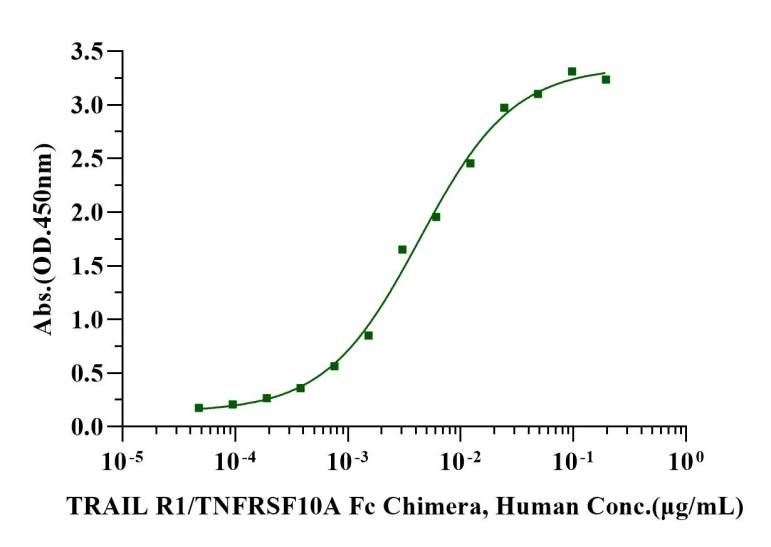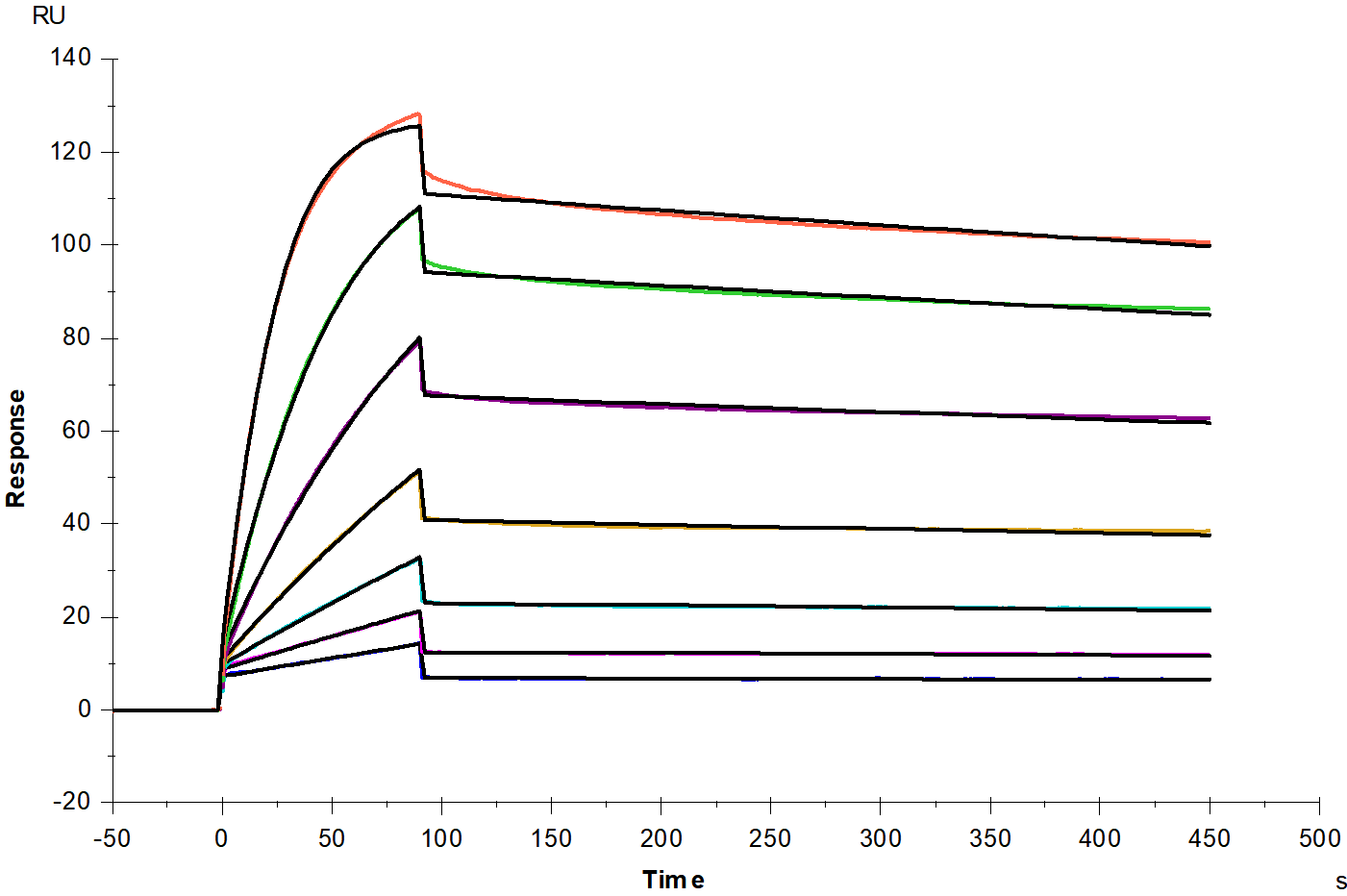Feoktistova M, Geserick P, Panayotova-Dimitrova D, Leverkus M. Pick your poison: the Ripoptosome, a cell death platform regulating apoptosis and necroptosis. Cell Cycle. 2012; 11:460–7.
Hughes MA, Langlais C, Cain K, MacFarlane M. Isolation, characterisation and reconstitution of cell death signalling complexes. Methods. 2013; 61:98–104.
Wajant H. TRAIL and NFkappaB signaling-a complex relationship. Vitam Horm. 2004; 67:101–32.
TNFSFR10A, also known as death receptor 4, DR4, and TNF-related apoptosis-inducing ligand receptor 1, TRAIL-R1, is a member of the TNF receptor superfamily. TNFSFR10A can be expressed by spleen, peripheral blood leukocytes, small intestine and thymus,but also in K-562 erythroleukemia cells, MCF-7 breast carcinoma cells and activated T-cells. TNFSFR10A encodes a cell surface receptor involved in apoptotic, necroptotic, and inflammatory cell-signaling pathways. TNFRSF10A serves as a receptor for the cytokine TNF-related apoptosis-inducing ligand (TRAIL) in death receptor signaling pathways and has also been shown to be involved in the activation of NFκβ inflammatory signaling pathways.

Immobilized TRAIL/Apo2L, Human (Cat. No. UA040039) at 2.0μg/mL (100μL/well) can bind TRAIL R1/TNFRSF10A Fc Chimera, Human (Cat. No. UA010630) with EC50 of 3.51-5.40 ng/mL.
1μg (R: reducing condition, N: non-reducing condition).

Protein A Chip captured TRAIL R1/TNFRSF10A Fc Chimera, Human (Cat. No. UA010630), can bind TRAIL/Apo2L, Human (Cat. No. UA040039) with an affinity constant of 0.34nM as determined in SPR assay.